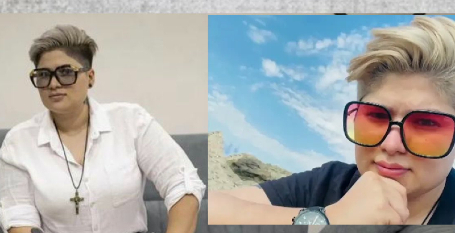According to reporting by human rights groups, Iran has imposed the death penalty on two women - because they are prominent lesbians.
Based on the available reporting, the women involved are 31-year-old Zahra Sediqi Hamedani, alias Sareh from Naqadeh, and 24-year-old Elham Chubdar from Urmia. They have apparently been sentenced to death by the Revolutionary Court of Urmia on charges of “corruption on earth through the promotion of homosexuality”.
A third woman - 52-year-old Soheila Ashrafi - is believed to be facing similar charges.
According to the reports, Sediqi was detained in 2021 as she attempted to cross the border into Turkey where she planned to seek asylum.
It's believed that social media posts by the women is what has attracted the attention of Iranian authorities.
What's life like for LGBTQ people in Iran?
Let's take a look at some of the key equality indicators.
Is homosexuality legal in Iran?
No. Same-sex sexuality activity and can be punishable by death.
There are numerous examples of the death penalty being applied to punish gay men, and imprisonment and corporal punishment are also frequently used to persecute gay men.
Within Persian culture, there is a strong tradition of celebrating same-sex desire. The modern-day extreme prohibition of homosexuality was partly driven by the imposition of Sharia law following the 1979 revolution. In this period, homosexuality was deliberately conflated with pedophilia.
Are there anti-discrimination protections in place for LGBTQ people in Iran?
There are no anti-discrimination protections that address the question of sexuality.
Is there Marriage Equality in Iran?
There is no legal recognition of same-sex relationships.
What’s life like for LGBTQ people in Iran?
Iran is an extremely dangerous place for LGBTQ people. There is systemic homophobia and state-sanctioned persecution and punishment.
LGBTQ people are forced to conceal their sexuality or risk imprisonment or death.
Information about LGBTQ people or topics are heavily censored.
What’s the history of gay sex in Iran?
Given the systemic homophobia that LGBTQ people experience in Iran today, it’s a bit surprising to look at the history of the country and realise that this used to be a fairly queer part of the world.
Greek historians, from around the 5th century, documented a strong homosocial and homosexual tradition with the people of Persia.
Until the mid-seventeenth century, male houses of prostitution were recognised, tax-paying establishments.In the court of Naser al-Din Shah – who ruled Persia from 1848 to 1896 – keeping boy concubines was still an acceptable practice. In addition to his wives and harem, the Shah also had a young male lover, Malijak.
There is also a significant amount of literature in Persian that contain explicit same-sex illustrations.The work of prominent medieval Persian poet Saadi Shirazi has been interpreted as being homoerotic – particularly his writings of Bustan, and also Gulistan.
In her book, Sexual Politics in Modern Iran, researcher Janet Afary documents that in pre-modern Iran, same-sex sexual activity could be described as highly-codified status-defined homosexuality. Afary’s research reveals that it was relatively common for an older man to take a young man – the amrad – as a sexual partner.
These intergenerational same-sex relationships were highly-codified in that there were rules of courtship that had to be followed – the bestowal of presents, the teaching of literary texts, bodybuilding and military training, mentorship, and the development of social contacts that would help the younger man’s prospects or career. Sometimes men exchanged vows, known as brotherhood sigehs. The courtship rules were written down and passed from fathers to sons. As in Ancient Greece, fathers educated their sons on how to be courted by influential men who could play an important role in the boy’s future.












 Printable Version
Printable Version



















Reader's Comments
Please log in to use this feature.